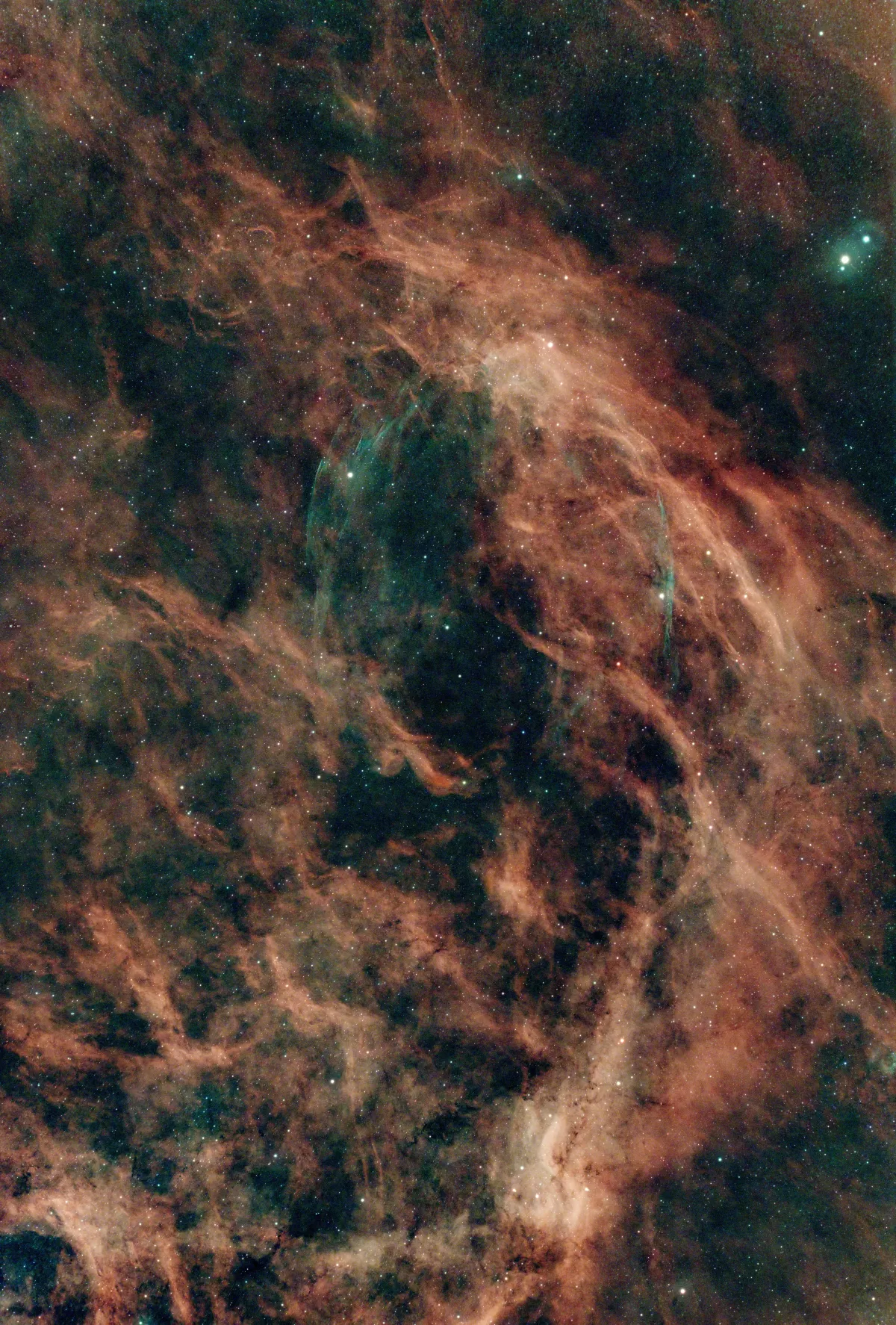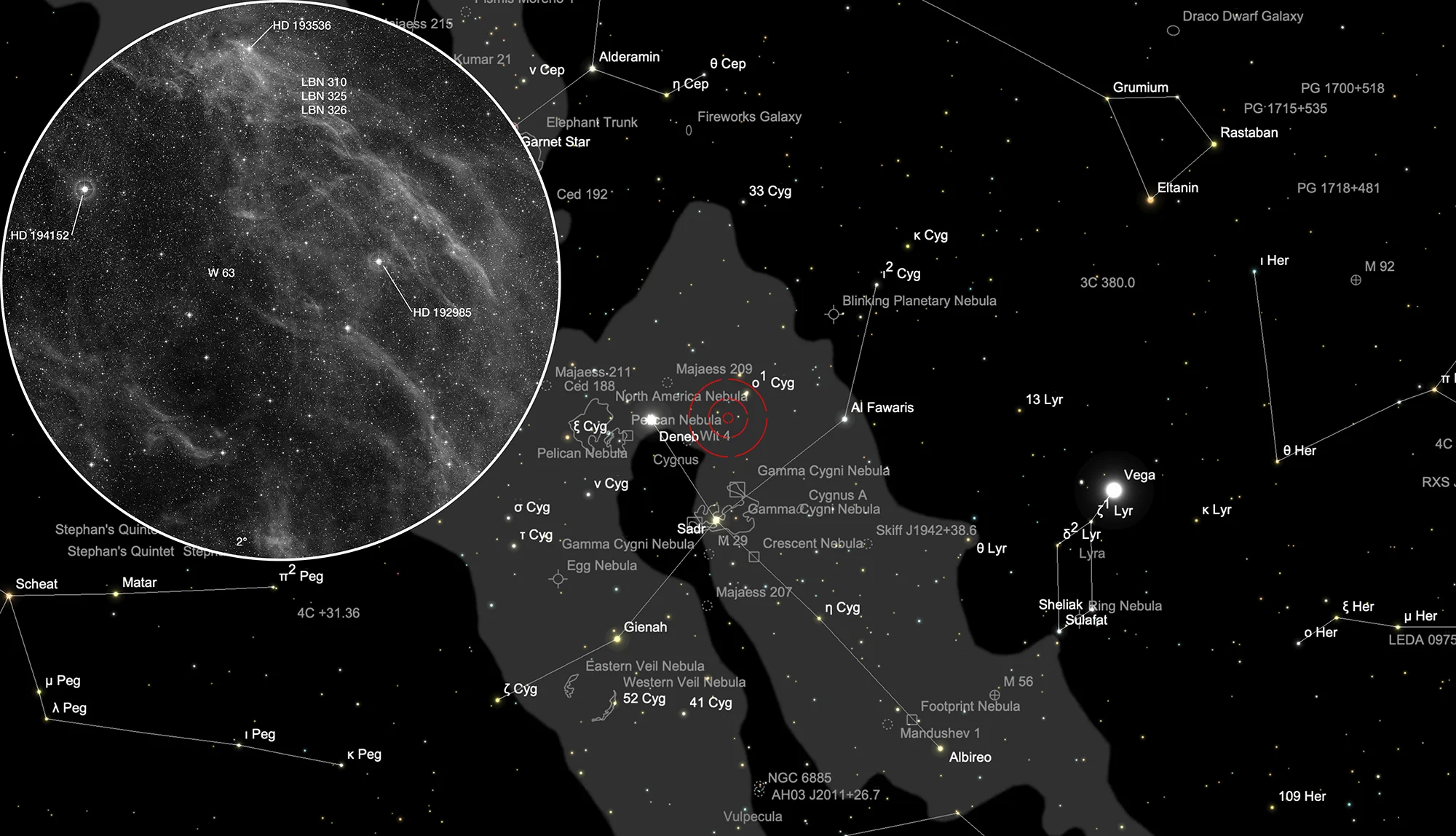Supernova Remnant Westerhout 63 (SNR G82.2+5.3)

History
In 1958 Gart Westerhout conducted survey of the radiation along the galactic ridge and a search for discrete sources using the 25m radio telescope at Dwingeloo, Netherlands. This radio source was listed as number 63 (W 63, Westerhout 63) of total 82 identified sources. The size was determined as 1.5°×1.5°. The notes read: «Source is 0.6° south of bright bit in the emission at the source position, but very faint. No proper identification. Are these wisps connected with VI Cyg? (Morgan et al. 1955). [739]
R. W. Wilson and J. G Bolten of the California Institute of Technology Radio Observatory did a survey of galactic radiation in 1959. They found 110 discrete radio sources. Some of them could not be identified visually with objects on the POSS plates, so also the entry listed as number 88 (CTB 88, CTB = Caltech Observation List B), which was listed with a diameter of 1.0°×1.5°. [597]
In 1968 new observations by H. Wendker using the 92m radio telescope of National Radio Astronomy Observatory and 122m radio telescope of Vermillion River Observatory showed that the radio source W 63 had a shell type structure. It was concluded that W 63 was most likely a galactic supernova remnant. [740]
In 1976 F. Sabbadin could identify the optical H II counterpart of W 63 using spectroscopic observations with the image-tube spectrograph attached at the newtonian focus of the 122 cm reflector of Asiago Observatory in Italy. [742] The designation SNR G82.2+5.3 represents Supernova Remnant and G for galactic coordinates: 82.2° longitude and +5.3° latitude.
Physical Properties
This supernova remnant is located at an estimated distance between 1.6 kpc and 3.3 kpc. Spectra analysis suggest shock velocities around 100 km/s. The estimated age is between 13.5 and 26.7 kyrs. [743]
| Name | SNR G82.2+5.3 |
| Object Type | Supernova Remnant |
| Right Ascension (J2000.0) | 20h 19m 00s |
| Declination (J2000.0) | +45° 30' 00" |
| Angular size | 95' × 65' |
| Identifiers | 2E 2017.1+4553; 2E 4355; CTB 88; GAL 082.16+05.32; GRS G082.20 +05.40; SNR G082.2+05.3; W 63 |
Finder Chart
The supernova remnant W 63 is located in the constellation Cygnus, roughly 2° north of Simeis 57. It is too weak to be shown in the red DSS image among the filaments of H II region LBN 310/325/326. On 26 July it is in opposition to the Sun and crosses the meridian at local midnight.
